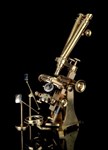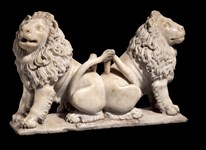Well-known from a number of publications, this 4th century BC mirror is finely engraved with an elaborate scene chronicled in Euripides’ lost play Telephos. Telephos, the mythical king of Mysia, was the father of both Tyrrhenus and Tarchon, two of the legendary founders of the Etruscan race.
The mirror was deemed the best on the market for more than 20 years in terms of decoration, size and its near-perfect condition.
It can be said with certainty where and when this object – out of the ground for more than a century – had been excavated (this is rarely the case). The mirror was found among the Calini Sepus grave goods, discovered in 1892 within the Necropoli del Casone, near Monteriggioni, and first published in 1928 by the art historian Ranuccio Bianchi Bandinelli (1900-75).
It was probably cleaned shortly after excavation and was bought by the Swiss collector Elsa Bloch-Diener, Bern, before 1981.
The estimate was two or three times more than the typical Etruscan mirror might bring at auction, but Christie’s head of department Laetitia Delaloye said a combination of form, condition and provenance proved “a perfect storm” for collectors.
“It ticked so many boxes. But if you had suggested the day before the sale it would make more than £100,000, I would have said you were crazy.”















